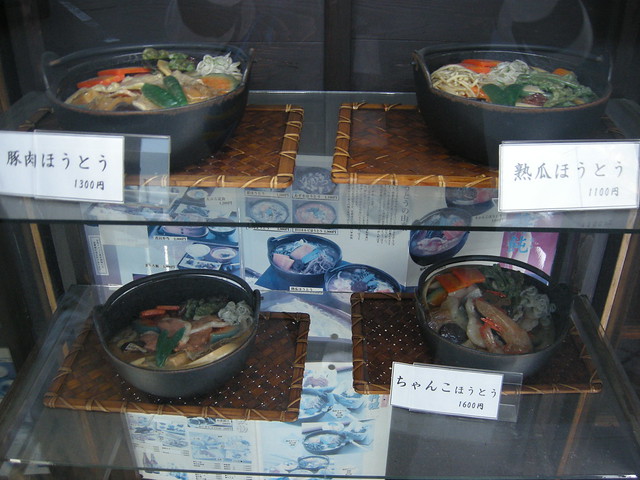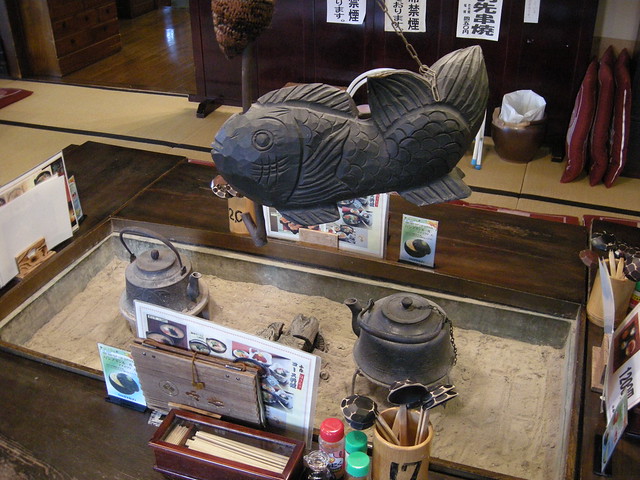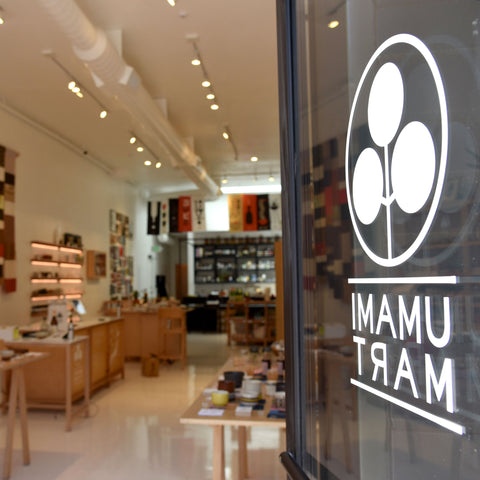
 There are many varieties of houtou, including venison. Game is widely served in this part of the country.
There are many varieties of houtou, including venison. Game is widely served in this part of the country.
 Plastic displays not for eating.
The interior of the restaurant was very homey, old-Japan style. Many people can sit around this table and admire the steel fish.
Plastic displays not for eating.
The interior of the restaurant was very homey, old-Japan style. Many people can sit around this table and admire the steel fish.

 I ordered the oyster houtou, as it was proudly hand-written as a seasonal special on the wall.
I ordered the oyster houtou, as it was proudly hand-written as a seasonal special on the wall.

 Here is the actual noodle. So thick! So long!
Here is the actual noodle. So thick! So long!
 The contents of this soup included sansai ("greens of the forest"), kabocha, shiitake, carrots, and even potatoes. Yamanashi's winters are harsh, so I imagine that this is the ultimate heart-warming, comfort food in this region. Especially with such a hearty miso broth, this was certainly a meal for lumberjacks and burly hunters. Ha. I kid. Actually, according to the Wiki page, houtou was considered the poor-man's food until restaurants such as Kosaku started popping up around town. I guess adding ingredients like oysters and gochujang is considered a montrosity to locals. Ain't modern life grand??
I bet houtou would be great first thing in the morning, before heading out for school or work, getting ready for the icy cold day ahead.
The contents of this soup included sansai ("greens of the forest"), kabocha, shiitake, carrots, and even potatoes. Yamanashi's winters are harsh, so I imagine that this is the ultimate heart-warming, comfort food in this region. Especially with such a hearty miso broth, this was certainly a meal for lumberjacks and burly hunters. Ha. I kid. Actually, according to the Wiki page, houtou was considered the poor-man's food until restaurants such as Kosaku started popping up around town. I guess adding ingredients like oysters and gochujang is considered a montrosity to locals. Ain't modern life grand??
I bet houtou would be great first thing in the morning, before heading out for school or work, getting ready for the icy cold day ahead.
Burrrrrr. I love California. Time for some ice cold somen!




Comments (2)
I am a huge fan of houtou! You are bombarded by houtou if you take a trip to Yamanashi Prefecture.
I’ve never had houtou although it reminds me a little of Nagoya’s misonikomi udon. But the houtou noodles are much thicker. And it looks very hearty!